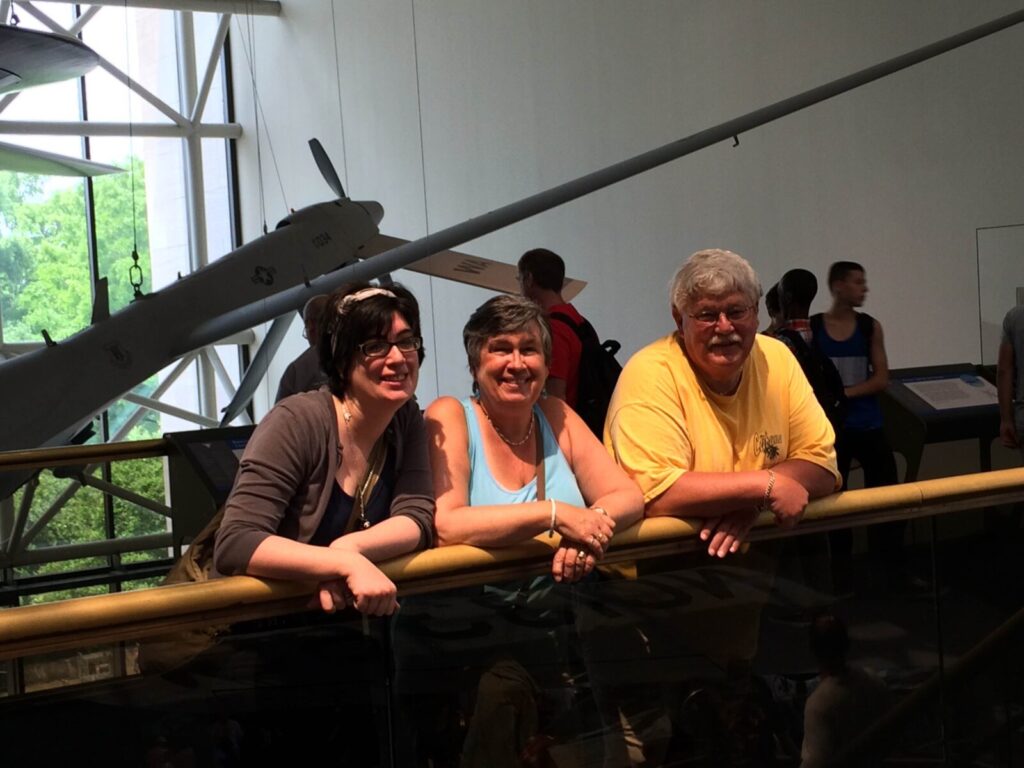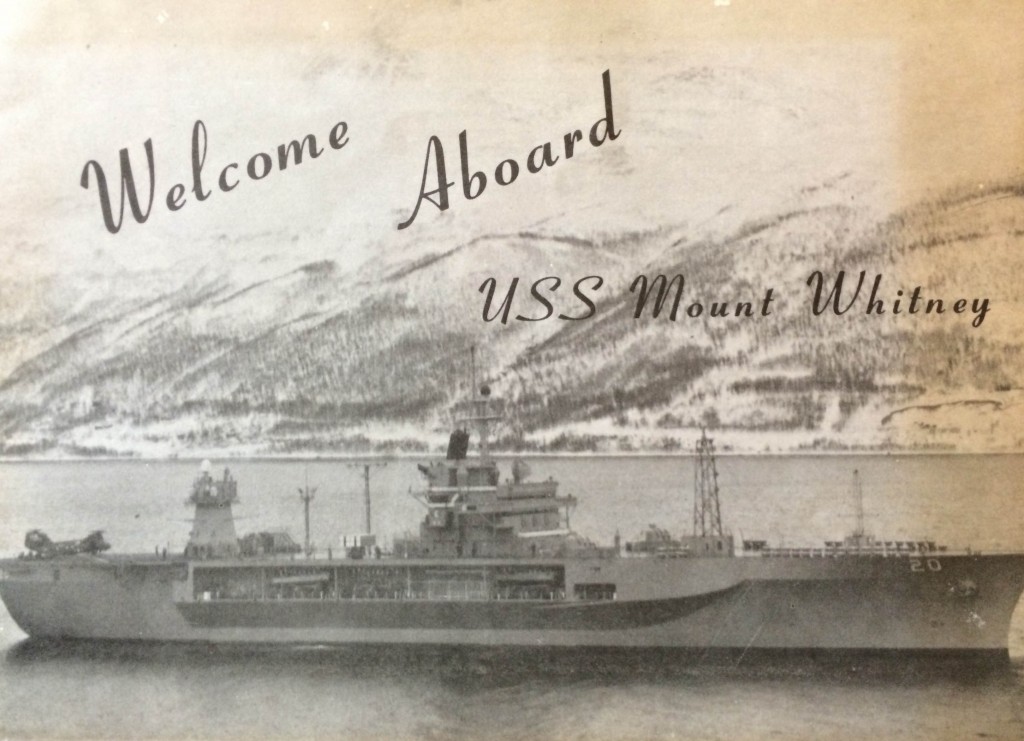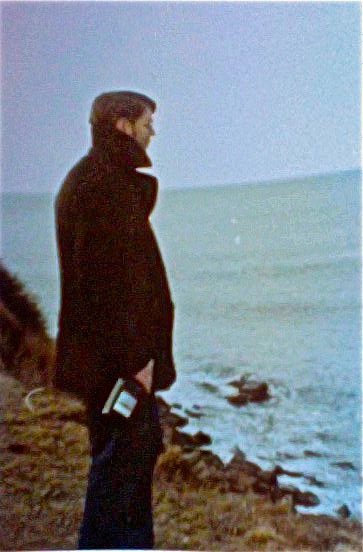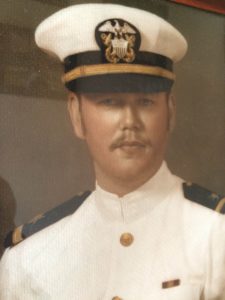
Angela Harrison, Anne Harrison, and John Harrison at the Air and Space Museum in Washington, DC (2015)
I was not born into a Navy family. Thankfully, one adopted me several years ago.
Although I have dedicated a third of my life to the study of the United States Navy, my personal connection to it outside of work was minimal. To be fair, I did have SOME family members who served in the Navy (I can remember a tiger cruise aboard USS George Washington with my uncle in the early nineties). Yet it was the deeply personal and daily connection I craved with the service I grew to love and admire. For a while, I thought I would remain on the other side of the glass, wistfully looking at others who shared their connection of the Navy’s rich heritage and traditions with loved ones. I prepared myself to become a bachelor of naval history in every sense of the word.
That is until I met my wife Angela Harrison back in 2010. We met at a conference in St. Louis even though we lived only minutes apart back in the Hampton Roads area. It was a match made in Heaven…well almost. I remember telling her about the historical significance of the Eads Bridge to the Civil War in one of the first conversations outside of the Renaissance Hotel in downtown St. Louis. Apparently this was not what should be said to gain the attention of a lady. Regardless of my awkwardly pitiful way of getting her attention, she eventually bought it, and I am eternally grateful for that. As an added bonus to the full package that was my future wife, her father had served in the United States Navy for over twenty years.
Jackpot.
We both came back to Virginia Beach after the conference and began our relationship. It would only take me three weeks before I met her father for the first time. “Don’t take offense to anything he says,” she told me in the car going over to her parents’ house, “he likes to rip on people.” That first encounter did find me at the butt end of several jokes, but I survived. I knew Angela had to get her impeccable wit and charm from somebody. Over the course of the years that followed, I have come to love and admire my father-in-law, John Harrison, both for his service and dedication to this country and to his willingness to indulge my obsession with his former employer. Sometimes I call him John. Other people know him as Commander John Harrison, USN (Ret.).
In honor of today’s unofficial holiday, I wanted to write about my father-in-law and his time in the Navy. I enlisted (pun intended) the help of John’s friends and family to come up with my own unofficial history of CDR John Harrison and his impact on naval history during the late Cold War era. His story, like that of countless other fathers who have served or are currently serving in the United States Navy, is woven into the very fabric of the Navy’s ongoing narrative. Each story is equally important. This is John’s story.
Navy Tartans and White Sand Beaches: CDR John Harrison, USN (Ret.)
John Joseph Harrison was born on 24 January 1947 in St. Louis, MO. He grew up in Webster Groves, a suburb of the city. After spending several years at Bradley University in Peoria, Illinois, John got his draft notice. It was 1969, a benchmark year for the Selective Service System which planned to hold two draft lotteries in December. John graduated from Bradley that year and chose to cut out the middleman and join the United States Navy. Like most recruits from the land-locked Midwest, the allure of the open ocean seemed much more appealing as a choice. After some time training in San Diego, John did well on his tests and chose the rating of a Cryptologic Technician (CT). He then began training down in Pensacola to work in the now-defunct Naval Security Group (NAVSECGRU), one of the predecessors to today’s Naval Network Warfare Command (NETWARCOM).
The Naval Security Group was tasked with gathering intelligence and signals using methods of cryptology and information assurance. To a fast-thinking guy like John, it seemed like the perfect fit. In 1970, Seaman Harrison left the states and was sent to RAF Edzell in Scotland at the foot of the Highlands. RAF Edzell, in command of the United States Navy since February 1960, was chosen as a premier location for a newly established Naval Security Group Unit set up to monitor their Cold War adversaries using the Navy’s global High Frequency Direction Finding (HFDF) network and CEW Radar Station in nearby Inverbervie. He met his wife in Edzell, Anne, and was married in 1971. The encounter must have been fate. Why else would two meet and fall in love at a meeting for a skiing club IN SCOTLAND.
Later that year, John was chosen for Officer Candidate School and arrived in Newport, Rhode Island in early 1972. He was sent to Pensacola again in the summer of 1972 after receiving his commission as an Ensign to get further training in naval intelligence. By the end of the summer, his wife was pregnant with their first child and they were now stationed at Naval Communications Station (NAVCOMMSTA) in Honolulu, Hawaii (now NAVCAMS EASTPAC), working mostly at Pearl Harbor. In the several years the young Harrison family was in Hawaii, they had their son, Kevin, and he was promoted to a LTJG. I can recall several stories of both Anne and John recalling a fondness for their time in Hawaii – Pineapple fields, lush white sand beaches, and a once in a lifetime appearance on a Hawaii Game Show (The Diamond Head Game). In the hot summer months of the swamp town my wife and I currently reside in, the pleasantly cool trade winds of Hawaii seem a dream away.
By 1976, LTJG Harrison could no longer avoid going to sea. He was assigned to USS Forrestal (CV 59) at an interesting time in her career. Recently designated as a “multi-purpose aircraft carrier,” Forrestal shifted her focus from her former designation as an attack aircraft carrier. LTJG Harrison served aboard the Forrestal when then President Gerald Ford visited her during America’s bicentennial. The ship changed their homeport to Mayport, Florida, during a nine-month overhaul. He visited as often as he could. One particular visit that year only lasted twelve hours. John was on the ship when an A-7 Corsair II from VA-81 crashed on the flight deck in January 1978, killing two deck crewman and injuring 10 others. Wife Anne recalls the event:
“It was Super Bowl Sunday. Families were called on the phone to let them know that their sailor was okay. They didn’t want them to find out about it firsthand from the television news. I can remember John telling me it was frightening to hear General Quarters call that it “was not a drill.” He said it was awful – blood donors were requested shortly after the accident. Thank God they were not far off the coast of Virginia.”
He also was onboard her (in what proved to be an unlucky year for Forrestal) when the rash of fires broke out in the spring of that year. Unlike the larger fire from the previous decade, these were put out “within seconds.” Thankfully, it was events like the disaster in 1967 that made sailors more equipped for firefighting and damage control.
There were also some amusing times aboard the carrier. One of the more amusing stories John once told me when Angela and I were dating involved payroll and a prospective car purchase:
“I can remember one time when a few of the Forrestal’s sailors stole the payroll the night before payday on the ship. Back then sailors were paid with cold hard cash. I had just finished my watch when it happened. The two sailors were later caught attempting to buy a car with the cash they had stolen!”
While on a Med Cruise in 1978, John received orders back to RAF Edzell. By then, it had been almost seven years since his wife had been back to Scotland. It was surely a welcome surprise for the family. By 1980, John was promoted to LCDR. A few months later, my wife Angela was born in Forfar, Angus.
Two years later, John was once again up for orders. He was invited to dinner by the base detailer who asked if he had ever been to Washington, D.C. Other than a school field trip, neither him nor his family had visited the Nation’s Capitol. Although he was sure to begrudgingly get his orders there, he was instead transferred to GCHQ in Cheltenham, England, a place that one historian called “Britain’s most secret intelligence agency.” Anne recalls the event as a “big sigh of relief” for his young family.
 Cheltenham was an interesting duty station for the Harrison family. During his time there, LCDR Harrison was able to tour several English bases. He even had a chance to live aboard a submarine for several days. By 1985, it was time for the family of four to return stateside, this time in Virginia Beach, VA. LCDR Harrison was assigned to the Second Fleet Staff on USS Mount Whitney (LCC 20), the flagship of the fleet. He also spent some time aboard USS Saipan (LHA 2), also homeported in Norfolk. His long-time friend Tony Morgan was a young ensign assigned to John’s wardroom aboard USS Saipan. He recalled during a phone interview the first time he met John in the mid-1980s. John thought his new roommate was actually dead the first few days they lived together because Tony “was always dead asleep” when John got off after his watches. In reality, Tony was a fresh Ensign unaccustomed to life aboard a ship. The seasickness made him tired, which John was unaware of. It is a amusing story John told at his retirement several years later. “If he started to smell,” John mused, “I was going to have to call somebody.”
Cheltenham was an interesting duty station for the Harrison family. During his time there, LCDR Harrison was able to tour several English bases. He even had a chance to live aboard a submarine for several days. By 1985, it was time for the family of four to return stateside, this time in Virginia Beach, VA. LCDR Harrison was assigned to the Second Fleet Staff on USS Mount Whitney (LCC 20), the flagship of the fleet. He also spent some time aboard USS Saipan (LHA 2), also homeported in Norfolk. His long-time friend Tony Morgan was a young ensign assigned to John’s wardroom aboard USS Saipan. He recalled during a phone interview the first time he met John in the mid-1980s. John thought his new roommate was actually dead the first few days they lived together because Tony “was always dead asleep” when John got off after his watches. In reality, Tony was a fresh Ensign unaccustomed to life aboard a ship. The seasickness made him tired, which John was unaware of. It is a amusing story John told at his retirement several years later. “If he started to smell,” John mused, “I was going to have to call somebody.”
His cruises stretched to weeks instead of months. Angela and Kevin were fortunate enough to be part of a Navy family that operated in close proximity, a reality the majority of Navy families today are not afforded. For that, they have always been thankful.
My wife does not remember much of John’s career during that time. “To be honest,” she told me, “a lot of what dad did was secretive so I only saw it as a ‘a job’ as a young kid rather than actual military service.” One thing she will never forget from that time in her life was the smell of the ship he always carried home:
“I remember when I was a kid my dad I would run to and hug my dad when he came home from work. He would always have that weird ship’s smell on it, that reminds me of a combination of tar, oil, and asphalt. I can still smell it if I think about it. It’s funny how I almost miss it now.”
John’s final duty station was at CSGLANTFLT at Naval Station Norfolk. While there, he was promoted to CDR. CDR John Harrison retired from the Navy in 1991 after 22 years of service. The family stayed in Virginia Beach. He went on to work as a contractor for the Navy for the next two decades until his official retirement the weekend of his daughter’s wedding – my own unofficial adoption date. He has now traded his Navy dress whites and medals for golf shirts and his grandchildren’s diapers. He thoroughly enjoys his well-deserved retirement playing golf, traveling, and taking care of his three beautiful grandchildren. There is no medal for becoming “grandpa,” yet he still wears it on his face with as much pride and satisfaction as the ones he earned in service of our country. He is an avid follower of the Naval Historical Foundation, which I am more than proud to admit.
So, here’s to John Harrison and all those out there who find the courage and sacrifice to hold the greatest rank of all: Dad. Thanks for adopting me.
Happy Father’s Day.




Kenneth B. Kulp, CTR3, USN (honorably discharged - 1973)